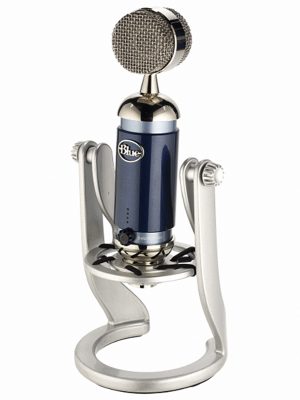You can connect real instruments, such as electric keyboards and guitars to your Mac for use in GarageBand. Using real instruments with GarageBand produces not only better sound, but realistic practice, as you finger the actual instrument and not an on-screen keyboard/string set.
Jun 21, 2012 Record with MacBook Pro headphone jack - CNET How to. Howto Plug 1/8 inch 3.5mm microphone into your mac computer with TRRS. (CORRECTLY) connect external microphone into MacBook Pro or TRRS. USB Microphone, ZealSound Metal Condenser Recording Microphone For Laptop MAC Windows Computer And Phone w/Stand for ASMR Garageband Smule Stream & Youtube Video Studio Voice Overs Broadcast (Gold) 3.8 out of 5 stars 75.
You can connect a real MIDI keyboard through a USB cable (on most newer gear) or a MIDI adapter (on older equipment). You can connect other MIDI instruments, including guitars, woodwinds, and drums, and record onto a real instrument track in GarageBand. Click the red Record button when you’re ready to rock. Move the playhead to just before where you want to start jamming.
MIDI is geek shorthand for Musical Instrument Digital Interface, a standard that has been around for years.
If the high-quality instrument you have in mind is your own singing voice, connect a microphone (in lieu of the Mac’s built-in microphone) to an audio input port on the computer.
Open System Preferences, click Sound, click Input, and then select Line In. Drag the Input volume slider to an appropriate level. Choose Vocals and the instrument that most closely matches your singing style, such as Epic Diva, Helium Breath, or Megaphone. Garage Band will tailor the effects to your voice.
Don’t worry if you don’t know how to characterize your singing voice; one of your other options is No Effects.
Good microphones are also useful when you’re recording podcasts. If you choose to use a microphone not for singing but for recording your speaking voice, set the option to No Effects (unless you’re going for a comedic effect).
To add the instrument to a recording, click the Create a New Track (+) button, choose Track→New Track, then select Real Instrument and click Create.
Choose an input source (stereo or mono), depending on how the instrument is connected to the Mac. Select Monitor from the pop-up menu to be able to hear the instrument as you play it, with or without feedback.
You can create Aggregate Device to increase the number audio inputs and outputs available at the same time. You can also use an Aggregate Device if your application doesn't support separate input and output devices.
With Logic Pro, GarageBand, and MainStage, you can use a separate device for input and output. For example, you can use a USB microphone for input and the headphone jack of your Mac for output. Some applications not manufactured by Apple don't support separate input and output devices.
Set up an Aggregate Device
When you create an Aggregate Device, make sure to connect all external audio interfaces first.
- From the Finder, choose Go > Utilities. Open the Audio MIDI Setup application.
- Click the Add (+) button on the bottom-left corner in the Audio Devices window and chose Create Aggregate Device.
- A new Aggregate Device appears in the list on the left side of the window. To rename the device, double-click it.
- With the new Aggregate Device selected, enable the checkbox labeled 'Use' on the left side of the Audio Devices window. Do this for each device you want to include in the Aggregate Device. The order in which you check the boxes determines the order of the inputs and outputs in applications like Logic Pro and MainStage. For example, the first box you checked will be inputs one and two, the second box checked will be three and four, and so on.
The list on the right shows the currently connected audio devices and the number of input and output channels for each one.
- To use the clock of a device as the master clock for all the combined devices, choose the device from the Clock Source menu of the Aggregate Device. Choose the device with the most reliable clock.
- If your audio devices all work with word clock, connect them together using a word clock cable. Connect the cable from the device you designated as Clock Source to the input of each other device. Refer to your audio device product documentation for specific details.
- If any of your devices don't work with word clock, select the Drift Correction checkbox for any devices not designated clock master.
Use an Aggregate Device with Apple music creation software

Jack Mac Jail

- Open your application.
- Do the following depending on the application you're using:
- For Logic Pro, choose Logic Pro X > Preferences > Audio, then select Devices.
- For GarageBand, choose GarageBand > Preferences > Audio.
- For MainStage, choose MainStage > Preferences > Audio.
- Choose the Aggregate Device from the Output Device pop-up menu. Logic Pro and GarageBand automatically set the Input Device to the match the selected output device, which you can change if you want to use a different input device. In MainStage, you must manually select the input device.
- In Logic Pro and MainStage, click Apply Changes.
GarageBand automatically switches to the new input device.
Use the Aggregate Device as the sound output of your Mac
When you set the Aggregate Device as the sound output for your Mac, sounds from other apps on your Mac play through the Aggregate Device. The Aggregate Device also becomes the System Setting option in the Output and Input Device menus of your Apple music creation apps.
Mic Jack Mac To Garageband Online
- From the Finder, choose Go > Utilities. Open Audio MIDI Setup.
- Control-click the Aggregate Device in the left column, then choose 'Use this device for sound output' or 'Use this device for sound input.'